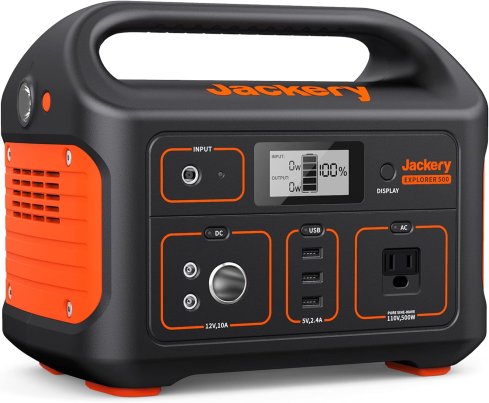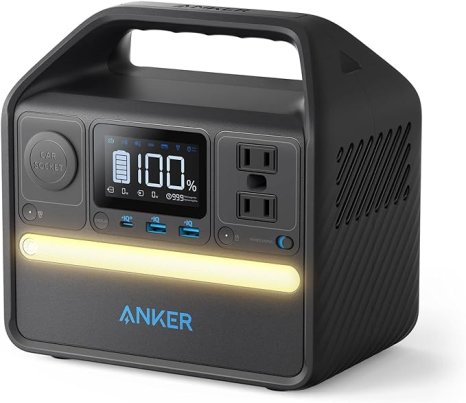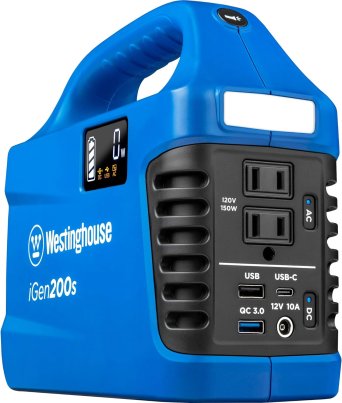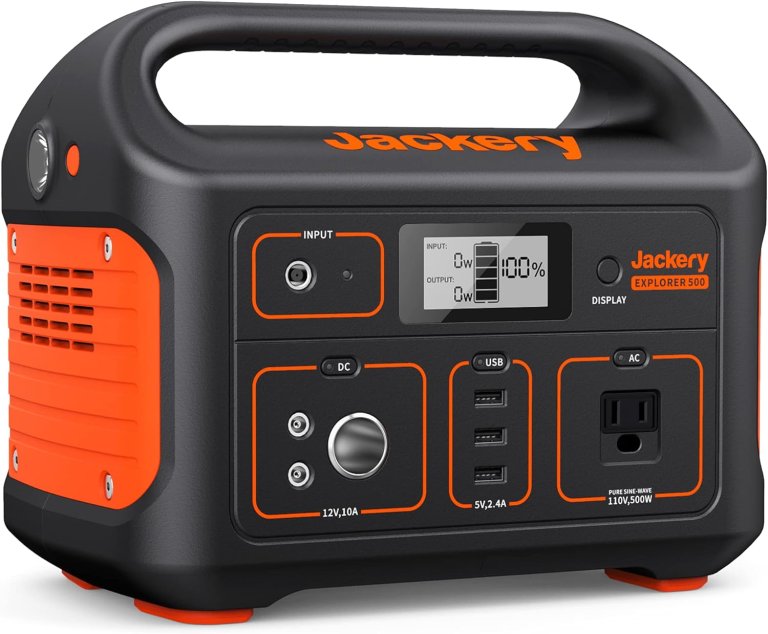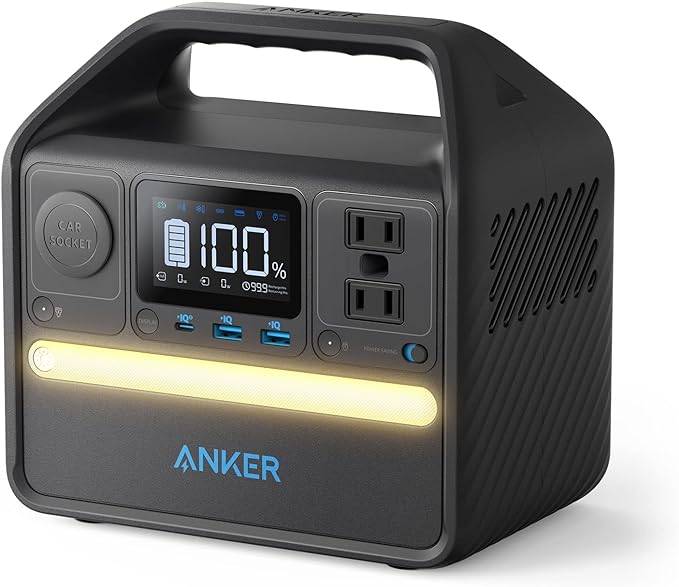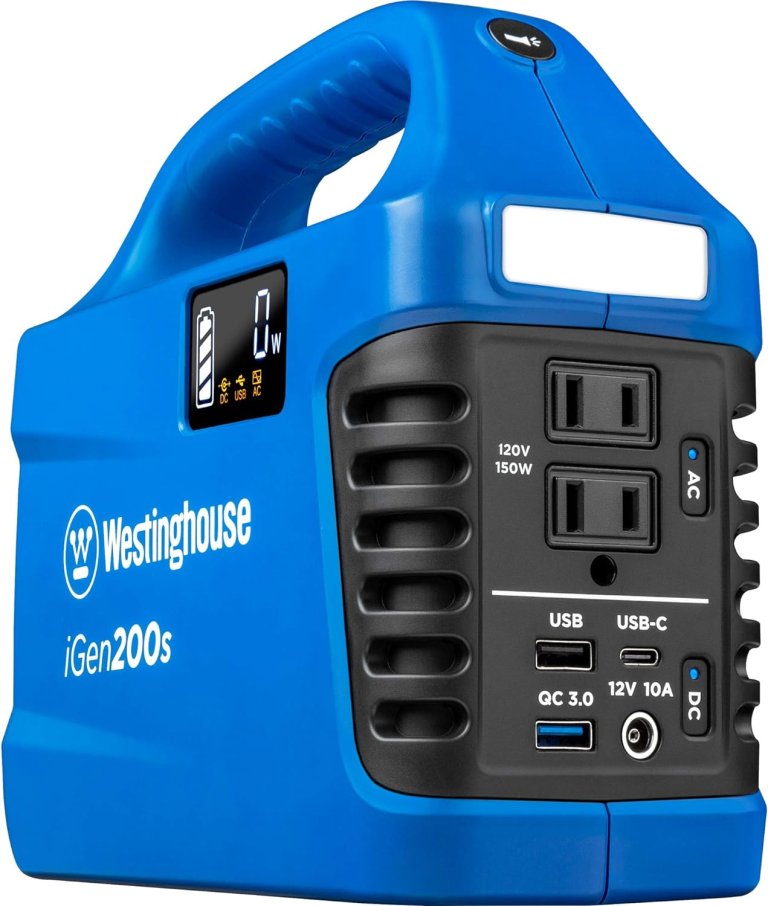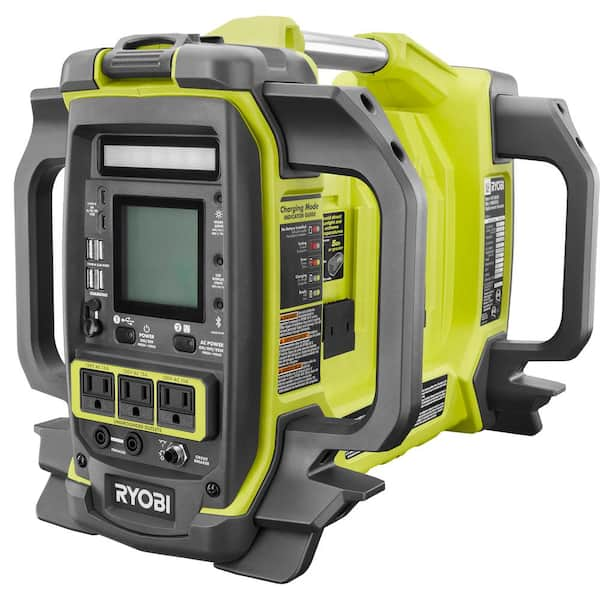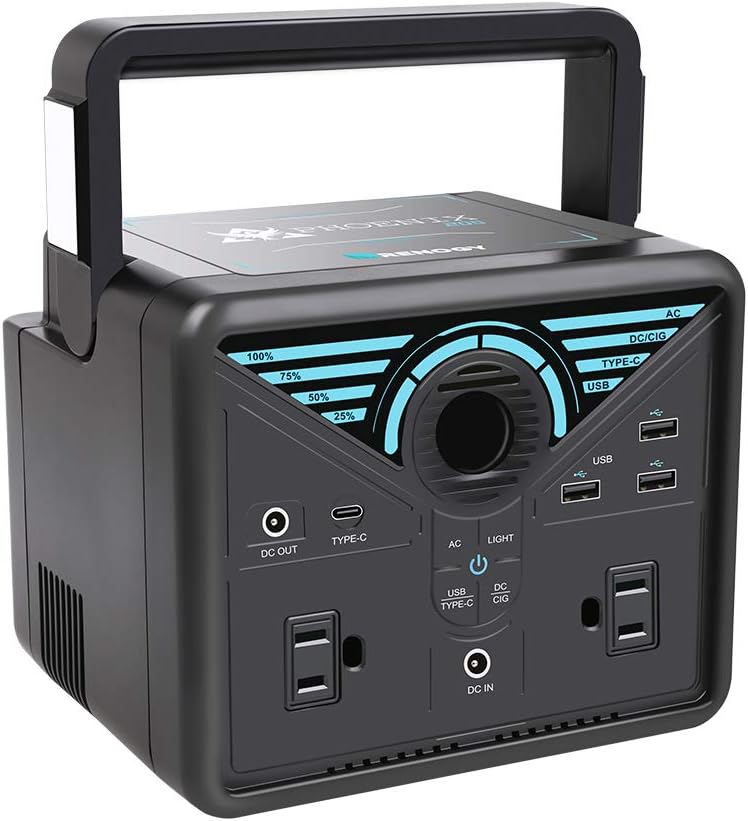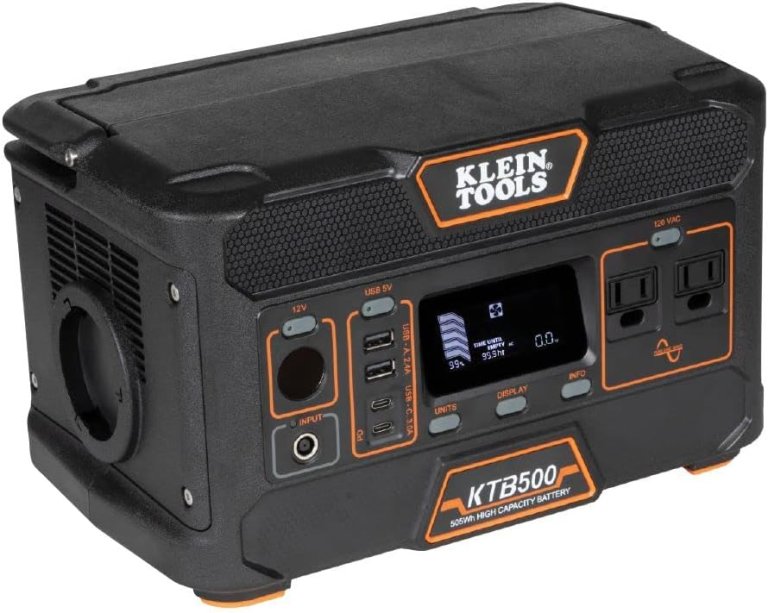We may earn revenue from the products available on this page and participate in affiliate programs. Learn more ›
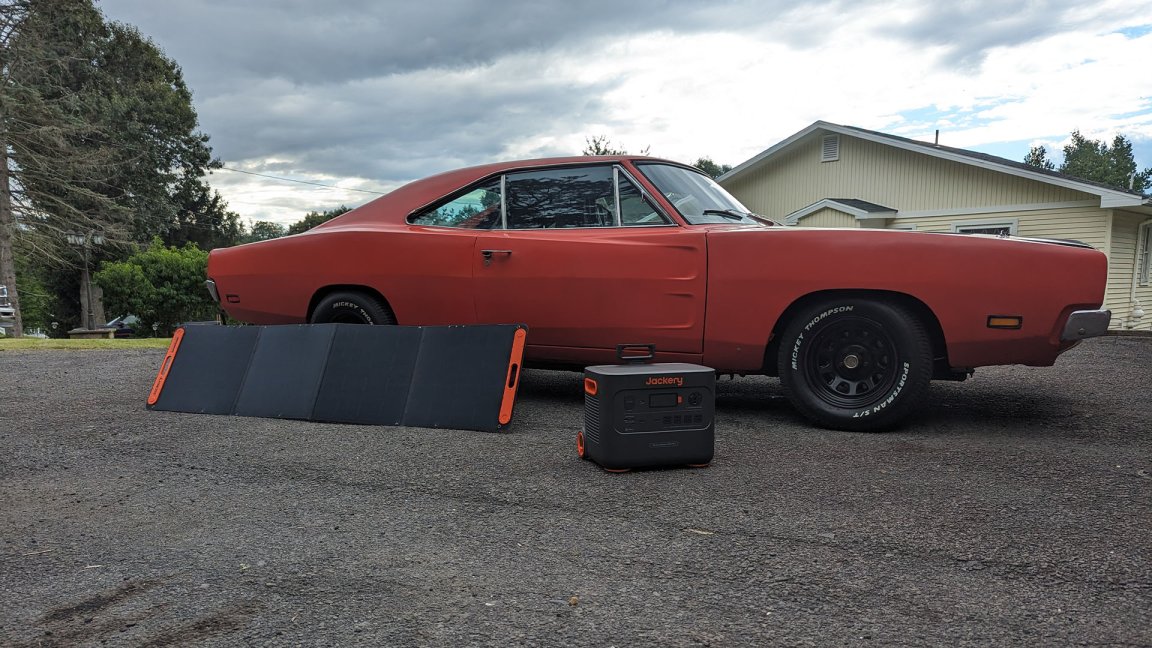
Tired of watching your batteries run down while you’re far from home with no access to electricity? Whether you’re trying to use power tools, run camping gadgets and gear, or simply want to keep your smartphone or laptop fully charged on the go, a portable power station is the solution you need. Available in various power levels, sizes, and weights, you can find a portable power station that will satisfy even your most power-hungry gadgets and appliances.
The best part, though, is that these devices are made to make it easy to carry electricity wherever you might travel, whether you’re hiking miles or headed to an isolated campsite. And you’ll even find options that pack generator-level power as well as eco-minded solar alternatives.

Summary List
- Best Overall Jackery Portable Power Station Explorer 500
- Best Value: Anker 521 Portable Power Station
- Honorable Mention: Westinghouse iGen200s Portable Power Station
- Best Premium: Ryobi 40V 1800-Watt Portable Battery Power Station
- Best Quick Charging: Klein Tools KTB500 Portable Power Station
Our Methodology
To choose the best portable power stations, I took a look at well-known and reputable brands within the portable power space. From there, I sought out travel-ready, easy-to-carry, and on-demand power stations that worked for the most common types of plugs and adapters (specifically, AC, DC, and USB connectivity). The power stations that were light enough to carry, reliable enough to work consistently even in unpredictable environments, and versatile enough to support—and, more importantly, power—a variety of different items. Plus, I also considered key travel details like the durability of the station and its housing, its ability to withstand weather and outdoor elements, and protection for its ports.
Best Portable Power Station Reviews & Recommendations
Best Overall
Jackery Portable Power Station Explorer 500
See ItPros
- Includes a wealth of outlets and ports
- Versatile charging options
- Handle small and medium gadgets or appliances
- Stable and reliable performance
Cons
- Expensive
- Loud while in use
The Jackery Portable Power Station Explorer 500 is a clear choice as the best overall option. It supports a large variety of AC-reliant devices and electronics like TV, blenders, laptops, etc. It contains a standard 12V/10A carport and three 5V/2.4A USB ports to charge your smaller devices, while the Jackery’s 110V/500W AC outlet can support any device under 500W.
Not only is it versatile in the items that can be charged, but it’s also versatile in terms of charging. It can be powered through a carport (with a full charge around 16 hours), a typical AC wall outlet (standard full charge time around eight hours), or through a solar option (solar panel not included).
Jackery makes a good product but you’re going to pay for it, and this is a little more costly than other, similarly-capable models. Its cooling fan is also loud, and can be a disturbance many don’t want to put up with, especially for the cost.
Best Value
Anker 521 Portable Power Station
See ItPros
- Charges multiple devices simultaneously
- Fits easily into a backpack
- Versatile charging options
- Quick recharging
Cons
- Not the most durable
- Doesn’t hold a charge
The Anker 521 is the perfect portable power station in case of an emergency. This product features one AC port, two USB-A ports, One USB-C Port, and a DC 12-volt port. It can be recharged using USB-C, AC, or solar power. At a weight of just eight pounds, it is an ideal option to fit inside your backpack while hiking, camping, fishing, or just enjoying a day at the beach.
For its compact size, the Anker portable power station holds a lot of power. When fully charged, this product can charge a laptop over three times, a smartphone over 16 times, and can even run small appliances. Despite all of that, it remains very affordable.
The reduced price does come at the cost of some performance. This model does seem to lose battery life in storage much more quickly than others. Complaints of early deaths also indicate it’s not the most durable option.
Honorable Mention
Westinghouse iGen200s Portable Power Station
See ItPros
- A wealth of versatile outlet choices
- 3 lighting modes
- LED data center for easy-to-read insight
- 4 recharging methods
Cons
- Best for small gadgets and appliances, not medium to large
- Solar panel not included
The Westinghouse iGen200s Portable Power Station gives you plenty of options, options that can be especially handy when you aren’t sure what you’ll need when you’re without power. This device features 300 peak watts and 150 running watts, and its compact 4-pound weight makes it easy to tote anywhere. It features six outlets total, which includes two 120-volt household outlets, a USB port, a USB-C port, a USB quick charge port, a DC outlet, and even a cigarette lighter outlet. A single charge allows this power station to run for up to 194 hours on its rechargeable lithium-ion battery, meaning you can recharge or power up again and again. As an added bonus, there are three illuminating flashlight modes and an easy-to-read LED screen.
However, it’s worth noting that this portable power station isn’t the biggest or most potent when it comes to running power-hungry gadgets. For example, it’ll handle smartphones and laptops just fine, but it may not deliver enough wattage for items like blenders, CPAP machines, or microwaves. Plus, if you want to recharge this power station via solar, you’ll have to purchase a compatible solar panel separately.
Best Premium
Ryobi 40V 1800-Watt Portable Battery Power Station
See ItPros
- Works within the larger Ryobi tool system
- Power small electronics and appliances
- 9 different outlets
- Parallel kit capable
Cons
- Expensive
- Heavy and bulky
If you need a lot of power, you’re going to love the premium-level wattage and features that come with the Ryobi 40V 1800-Watt Portable Battery Power Station. This device delivers 1,800 continuous watts of power, and it can run everything from your smartphone’s charging to TVs to fans to refrigerators. With pure sine technology and relatively quiet portable power, you’ll be able to run multiple electrical appliances without worry. Plus, there are multiple AC, USB-C, and USC-A outlets available to use. You’ll be able to monitor your power usage easily thanks to the LCD screen, which shows the battery level and load level. And extra features like remote shutoff and reset, power monitoring in a smartphone app, and LED lights make it one top-tier choice.
The problem with such a powerful device is that it comes at a hefty price – and this portable power station is quite costly. Additionally, it’s heavy and large in size, making it a challenge to carry for long distances. While it’s camping ready, you may not want to take it backpacking.
Best for Outdoor Use
Renogy Phoenix 200 Portable Power Station
See ItBest Quick Charging
Klein Tools KTB500 Portable Power Station
See ItPros
- Works within the larger Ryobi tool system
- Power small electronics and appliances
- 9 different outlets
- Parallel kit capable
Cons
- Expensive
- Heavy and bulky
Sure, plenty of portable power stations will leave you waiting anywhere from 6 to 12 hours – or longer! – to recharge your dead devices. However, the Klein Tools KTB500 Portable Power Station is one speedy device. This quick-charging power station is built to allow pass-through charging, which means you can charge or run your devices or tools while also charging its own lithium-ion battery. With 500 watts, you’ll have plenty of running power to operate devices and even small power tools with rechargeable batteries. And the perks of this power station are far-reaching. It offers two 12-volt outlets, four different USB ports, and a 12-volt car port. You can monitor real-time performance stats via the digital LCD screen, and a 5,000-lumen work light lets you illuminate in up to 8 hours of dim light or darkness. And for added portability, the lightweight design and collapsible handle make your work even easier.
If you plan to power this portable power station via its solar capability, it’s important to note that adding a solar panel isn’t meant to offer a complete recharge. Rather, you can use a compatible panel to extend its run time, but it’ll recharge pretty slowly compared to your typical AC outlet.
Our Verdict
Designed with portability in mind, yet powerful enough to handle medium-sized gadgets and appliances, the Jackery Portable Power Station Explorer 500 gives you plenty of power options when you’re far from home. Plus, it’s reliable and able to be recharged pretty much anywhere, even in sunlight alone. If you’re looking for a more budget-friendly price and great all-around value, the Anker 521 Portable Power Station is another standout pick that’s sleek and small in size.
Things to Consider Before Buying a Portable Power Station
Portable power stations come in many different styles and sizes, with varying wattages and available outlets or ports. Choosing the best fit for your needs really depends on how much power you need, what you’re looking to run off the power station, and where you’ll be using it most often.
Key Features
Lightweight
Portability is perhaps the most important feature of this product, so that you can take it with you on the go. Because of that, weight is one of the most important factors to concern yourself with. You need to balance the charging capabilities and the intended use with the weight of the product. Generally speaking, more capable units are heavier and harder to transport while lighter units are generally less outfitted in terms of charging capacity and ports. What’s right for you ultimately depends on your preferences and what you’re willing to deal with.
Low Noise
Portable power stations aren’t generators. Still, they are equipped with cooling fans that can produce quite a bit of noise. There’s no way around the inclusion of a fan that protects the unit from overheating, but you will find that some operate much more quietly than others. You want to do the research ahead of time to find out if a device is quite enough for you before you spend your money on it.
Overall Size
Weight and size don’t always go hand in hand, but they’re both critical to a devices portability. What’s acceptable for you ultimately depends on your intended use. A large device may not be much of an issue if you’re setting up camp near a vehicle or are using it on a job site. However, that’s definitely not ideal for backpacking or hiking. Reading up on the dimensions beforehand is critical to avoid winding up with an oversized device that’s of no use to you.
Portable Power Station Pricing
There are exceptions, but most portable power stations list for around $200-$500. Anything less is likely a cheaply made or used item that you’re taking a massive risk on, and a well-made power bank is likely a better choice. Anything more, and you’re investing in something that’s likely intended to compete with full-on generators.
FAQs
You’ve got questions. The Drive has answers.
A: The best portable power station for camping is one that can hold a substantial charge and is lightweight enough to carry with you while traveling. There are a variety of options available that meet these criteria.
A: Yes, a battery-powered outlet stores electrical energy from a wall AC outlet in its built-in battery. Portable power stations are considered a form of battery-powered outlet.
A: A typical portable power station can last anywhere from three hours to 13 hours on a fully charged battery. The lifespan depends on the battery’s age, type of battery, size, and the number of electronics used with the power station.
